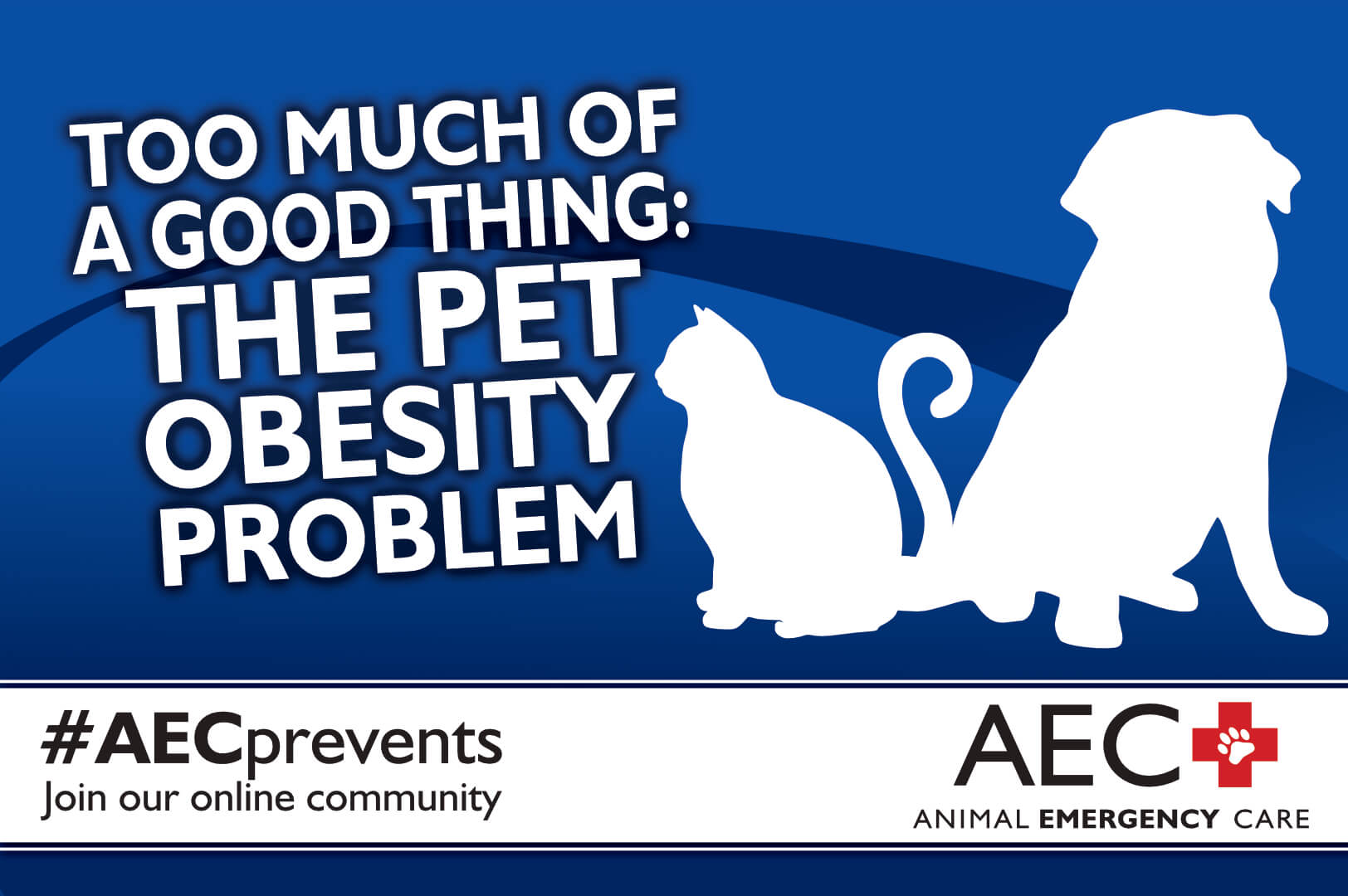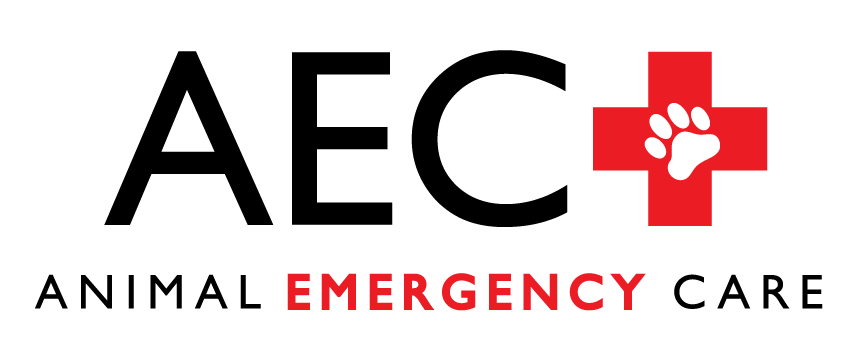It can be difficult for pet owners to resist the adoring eyes of their four-legged companions and not shower them with treats. However, offering your pet too many treats or overfilling their food bowl can be dangerous for their overall health and wellness. Pet obesity is an epidemic, with more than 50% percent of dogs and cats in the United States obese or overweight. Pets who are overweight or obese have an increased risk for numerous health problems that may decrease their life expectancy and quality of life. Fortunately, many weight-related health issues in pets can be alleviated with proper weight management. Our Animal Emergency Care team describes obesity signs, associated diseases, and ways to protect your pet from becoming an obesity statistic.
What is obesity in pets?
It can be challenging to recognize that your pet is overweight or obese, especially in extra fluffy or longhaired breeds. Obesity is a nutritional disease caused by an excessive amount of adipose or fat tissue accumulation in your pet’s body. In most cases a pet is considered obese when their body weight exceeds more than 15% of their ideal weight. A pet’s body type, activity level, genetics, and nutritional needs are factored into determining their ideal weight. Additionally, the Association for Pet Obesity Prevention has established an ideal weight range chart that can be used to evaluate a pet’s obesity risk. As a general rule, you should be able to feel your pet’s ribs but not be able to see them or have to search for them if they are at an appropriate weight. During your preventive care visits, your family veterinarian will weigh your pet and assign them a body condition score (BCS) that is recorded in their medical record and used to determine if they are a healthy weight.
Pet obesity disease risks and signs
Your pet’s excess weight can lead to an increased risk for numerous medical problems because of special fat proteins that are released and that can cause body inflammation. Common diseases associated with pet obesity include:
- Osteoarthritis and intervertebral disc disease — Excess weight causes increased stress on your pet’s joints and can exacerbate cartilage breakdown which leads to arthritis or back pain. Signs may include difficulty lying down, limping, muscle wasting, and decreased interest in playing.
- Diabetes and insulin resistance — Inflammation caused by excess weight can result in a pet’s inability to process glucose properly, and this can lead to diabetes, a potentially life-threatening condition. Signs may include increased thirst and urination, weight loss, cloudy eyes, and chronic skin or urinary infections.
- Kidney disease —High blood pressure is a consequence of obesity, and this can lead to decreased blood circulation to vital organs including the kidneys. Signs may include increased thirst, increased urination, dehydration, and weight loss.
- Heart and lung disease — Excess fat along the chest and abdomen can cause pressure on the heart and lungs which can result in decreased oxygen levels. Signs may include increased panting and abnormal breathing.
- Cancer — Like overweight humans, obese pets have an increased risk for certain cancers. Cancer signs are variable depending on the location and tumor type and may include decreased appetite, pain, non-healing wounds, lethargy, and weight loss.
Pet obesity diagnosis and treatment
Bring your pet in for a veterinary examination if you suspect they are obese, or if they are showing associated disease signs. Your veterinarian will perform a nose-to-tail examination which will include a weight and BCS evaluation. Diagnostic tests may include blood work to check for infection and overall organ health and a urinalysis to evaluate your pet’s bladder health and kidney function. Hormone tests also may be recommended to rule out underlying causes for your pet’s obesity such as hypothyroidism. Imaging such as X-rays may be recommended to examine your pet’s organs and joints.
Treatments will be based on the underlying cause of your pet’s obesity. Pets with severe signs such as breathing or heart problems may require a hospital stay for oxygen therapy, monitoring, and required treatments. Your veterinarian will discuss a weight loss plan which may include specialized diets and an exercise program.
Financial options for obesity treatments in pets
Pets who are on a weight loss program or who are undergoing treatment for diseases such as arthritis or diabetes may require a hospital stay and several veterinary check-ups which can result in a large veterinary bill. However, purchasing a pet health insurance plan like Trupanion can ensure funds are available for emergency treatments and long-term care. Trupanion can pay your veterinary clinic directly which eliminates the need to submit paperwork and wait for reimbursements. Other financial options available to cover treatment costs include Care Credit, Scratch Pay, pet health savings accounts, and short-term loans.
Pet obesity prevention
Discuss with your veterinarian the best nutritional and exercise plan for your pet. Your pet’s daily calorie needs will be based on several factors including their breed and activity level, but this chart provides a range. Pets who maintain a healthy weight live more than two years longer than pets who are obese and have fewer medical problems. Obesity prevention tips include:
- Incorporating daily activity such as short, frequent walks into your pet’s routine
- Taking your pet for yearly or more frequent veterinary visits to monitor their weight and overall health
- Ensuring your pet’s treats make up no more than 10% of their total daily calories
- Using a measuring cup to ensure you are feeding your pet the correct amount of food
- Regularly checking your pet’s BCS with this chart to evaluate their weight in between veterinary visits
Bring your pet to your family veterinarian to discuss weight loss options and treatments for associated problems. If your pet develops obesity-related complications such as breathing problems or pain, Animal Emergency Care is available to help 24 hours a day. #AECprevents


